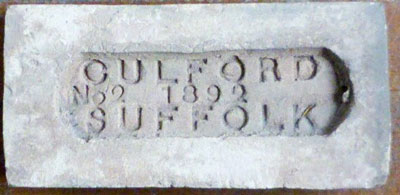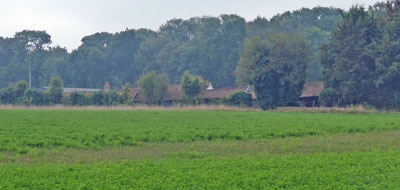Brickworks at Culford
This was an estate brickworks belonging to Culford Hall, Suffolk owned by the Benyon family until the Hall was sold in 1889 to George Henry, 5th Lord Cadogan who lived there until his death in 1933.
It is shown on two maps dated 1881 & 1903 with it no longer being shown on a 1950 map. In 1893 Lord Cadogan made many improvements to his house when he turned it into a mansion.
In 1901 Henry Warren is recorded as manager of the works & living at Brick Kiln Cottage.
Suffolk Heritage Explorer lists it as Monument Record CUL 019, with the following description:-
"Brick kilns shown & named on Tithe map and apportionment in 1839 (S1), and 1793 Cornwallis Estate Map (S3). Operated by Joseph Naylor between 1846-1855, Henry Whittaker (1855-1885), Henry Warren (1885-1919), William Southgate (1919-1930), Mr Balaam (1930- 1932) and Frank Watson (1932-1947 closed)(S2).
Brick and mathematical tile manufacture from at least 1789. Details of Estate Brickworks in (S5)".
January 2020. Breckland National Mapping Programme:-
"A large probable post medieval pit, mounds and structures most likely relating to Culford brick kiln (see above) can be seen as structures and earthworks (which have since been levelled) on aerial photographs (S6-S7). The large pit and mounds most likely relate to an extraction pit and spoil heaps associated to the brick kilns. The large earthwork pit and the mounds can be seen in the 1940s (S6) as earthworks and have been subsequently levelled with the site now under an industrial yard on recent (2018) aerial (S7) photographs. The structures centred at TL 8242 7123 can be seen in the 1940s and are still standing on recent aerial photographs (S7). The features have not been mapped as they are recorded in very good detail on the First Edition Ordnance Survey Map (S8).
J.Powell (Norfolk Historic Environment Service), 27th January 2020."



